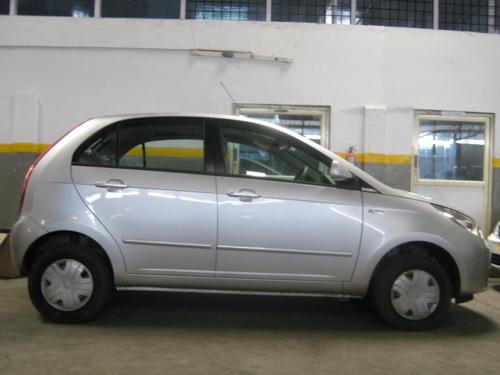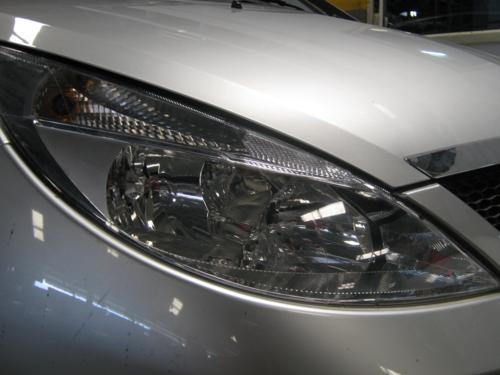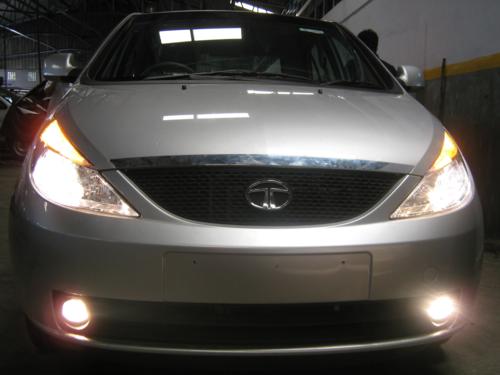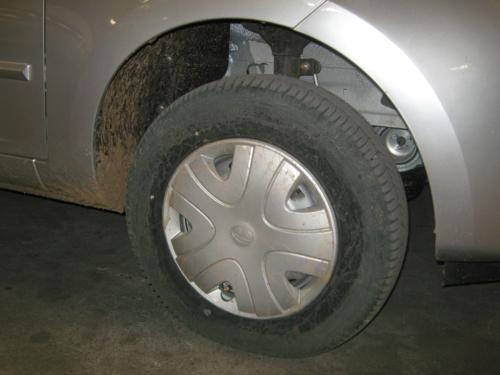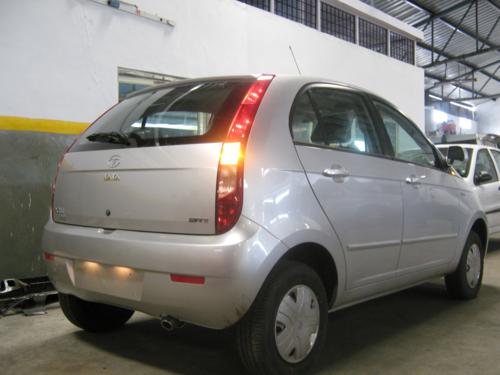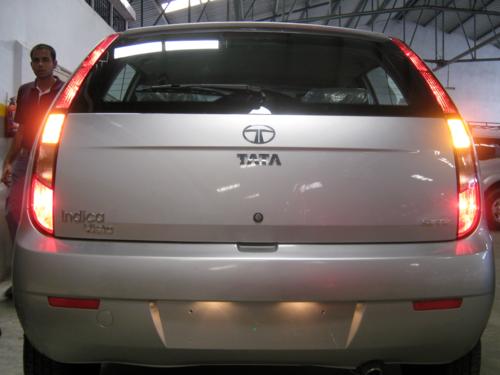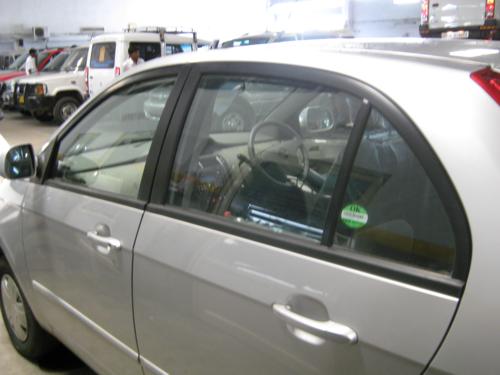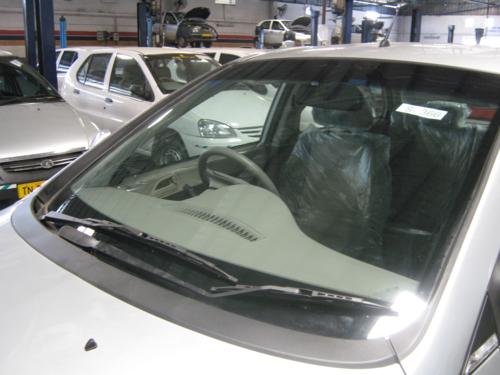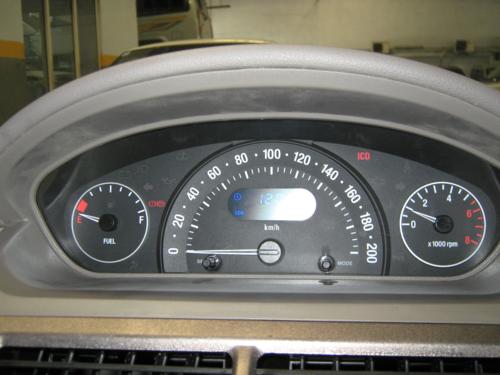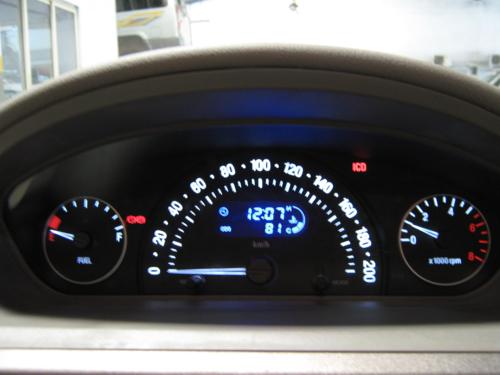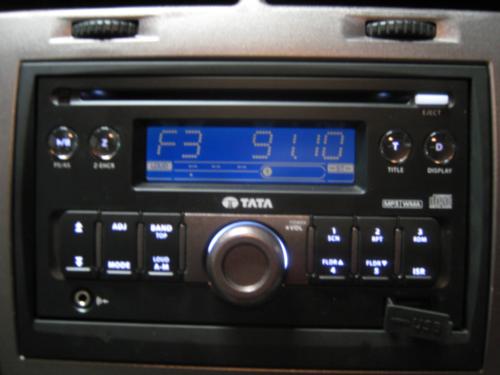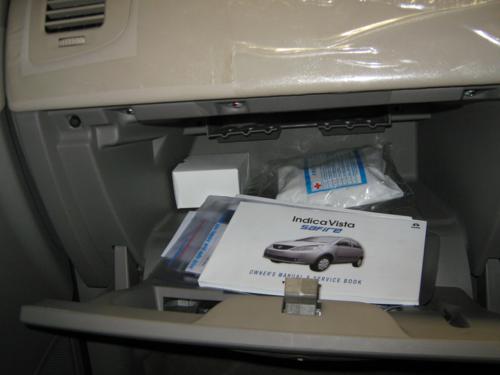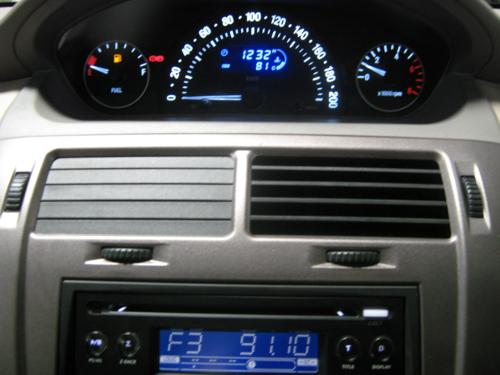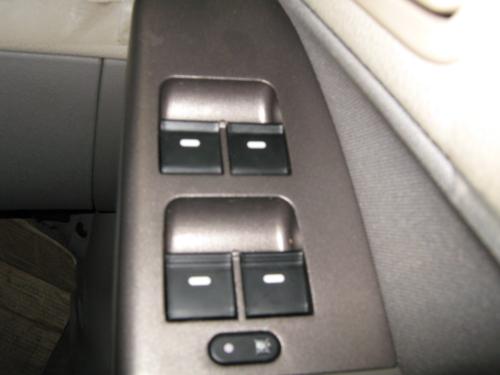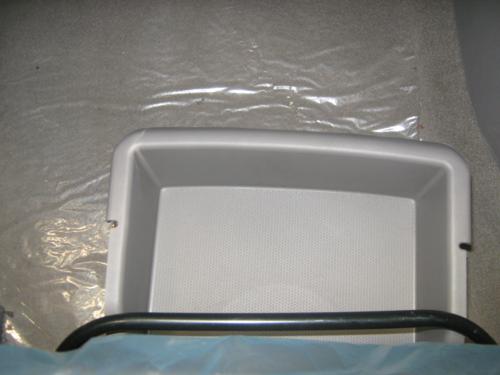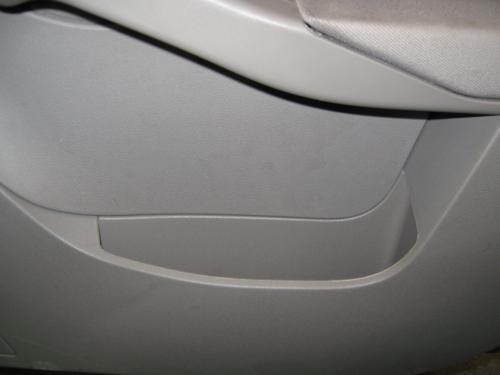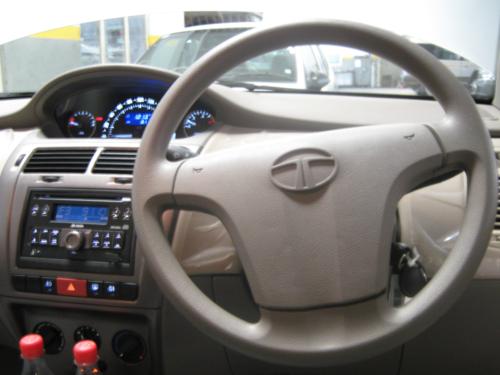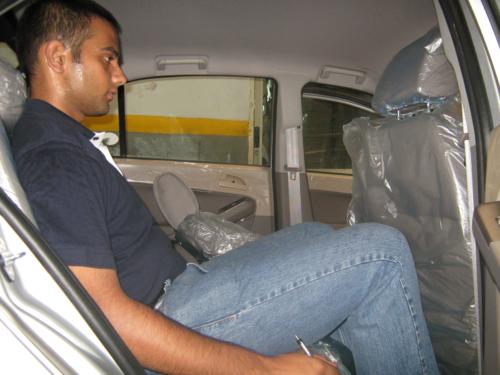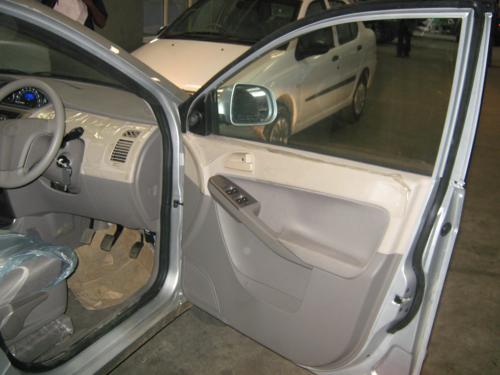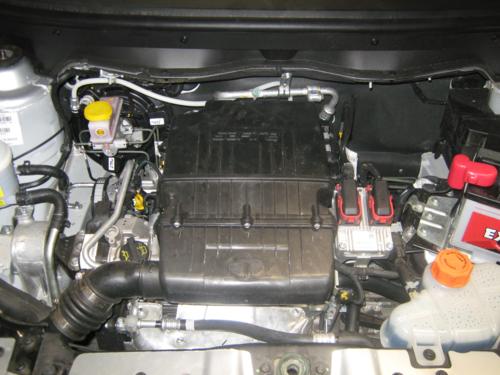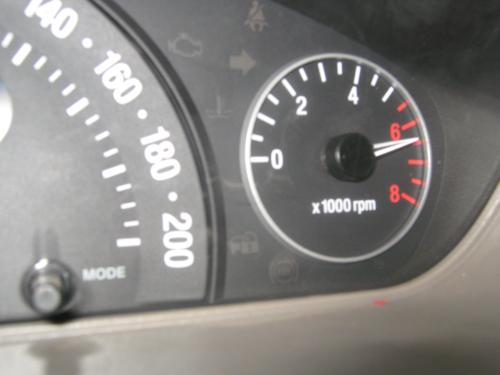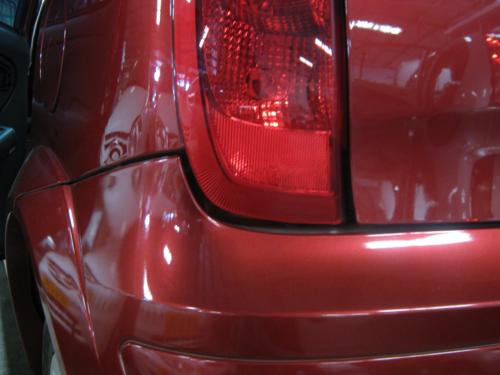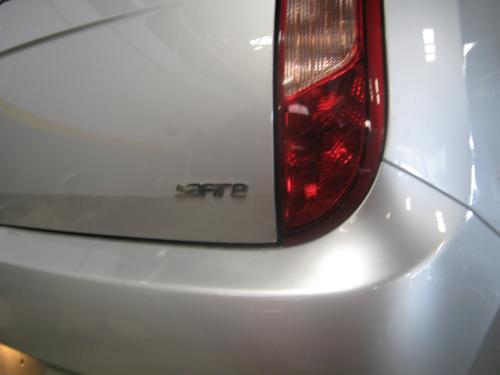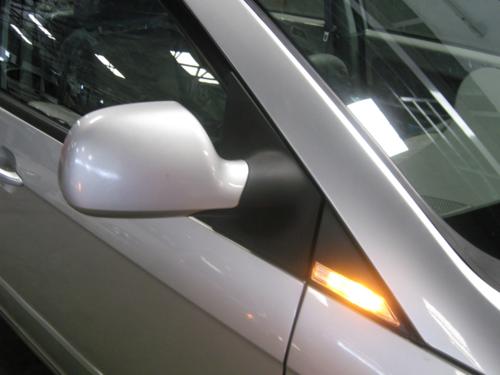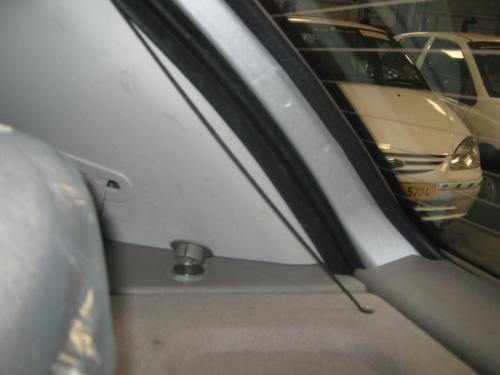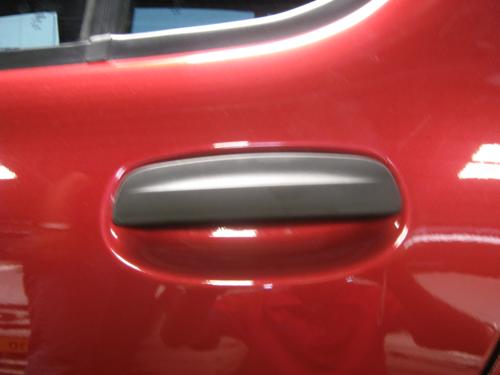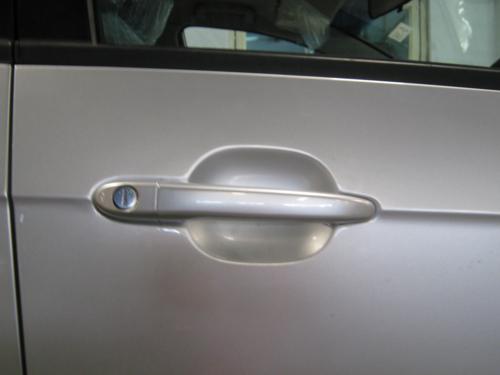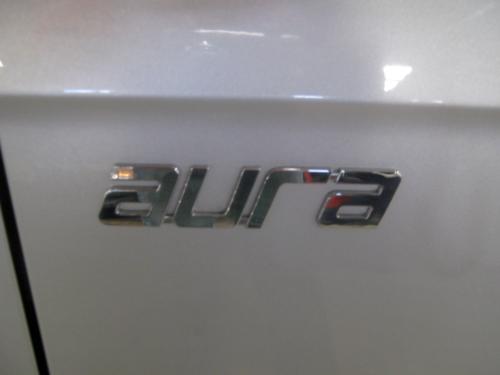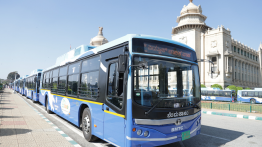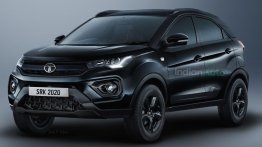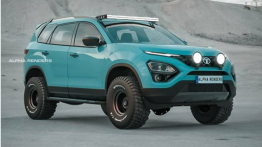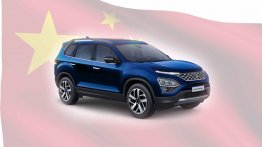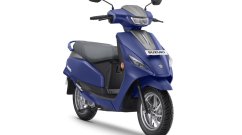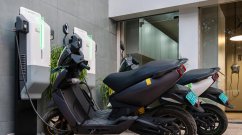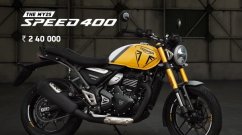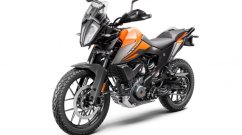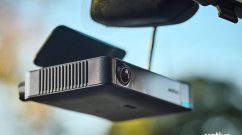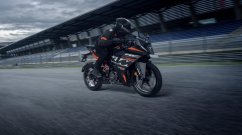When was the last time you ever wondered the Indica was getting long in the tooth? The original Indica was launched way back in 1998 and we've had to wait 10 long years to get an all new version and we say that the wait is worth every single day. TATA has made a lot of changes to the new version, changes that are very significant and the Indica Vista is a colossal improvement over the present Indica. All these changes contribute to a model that is up there among the best in the market and within striking distance of international standards. After sitting around the car and spending an hour or so with it, we wondered whether this car should wear the Indica badge after all. All the short falls of the V2 have been rectified in the Vista, which will set this cat among the pigeons. We simply love it.
EXTERIORS
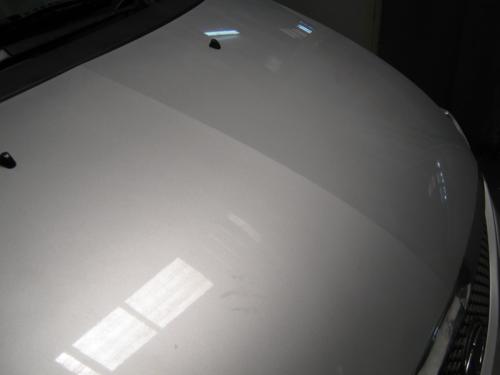
The first thing you notice about the Vista is that the styling is similar to the earlier Indica, which is quite good looking, I mean, c'mon. IDEA did a terrific job back then, and since we see the Indica V2 all around, the beauty or its style has faded away. The styling on the Vista is more evolutionary rather than radical (which is best explained by Honda's design philosophy). This evolutionary styling has reduced the burden on the designers and they have concentrated on the finer aspects of design rather than spending time on designing an all new model.
Looking at the car from a distance, you do feel that TATA could have concentrated more but this is until you take a closer look.
The headlamps look stunning and an art in itself even though they look similar to the ones found on Peugeots. The lights complement the smiling face which is a TATA trademark. The honeycomb radiator grill has a chrome strip on its top border to give it a rich feel. The front bumper is also contemporary with normal circular fog lamps and a rectangular recess split into two parts by a horizontal plane. The central ridge that runs along the bonnet debuts in the new Vista and will be followed in other TATA designs as well.
Along the sides, the wheel arches are more prominent and the Vista looks good without the plastic arches the old Indica gets. The wheels are still small to fill the wheel wells and a bigger rim size would have been better. The turn indicators are incorporated near the steeply raked A-pillars and make a style statement. The body profile is quite similar and it slightly slides down towards the rear. The main point worth mentioning is the large glass house but more on that later. This large glass house has reduced the width of the C-pillar and this is sure to aid visibility while parking/reversing.
The Vista is best viewed from the rear where the long lights and rounded shape make for a handsome design. The long lights run from the roof all the way to the bumper. The light cluster is split above the reverse lights so that an accident need not mean replacement of the entire cluster, which in turn mean less costs. This also shows the strong family lineage also found in the Nano. The rear bumper is neat with embedded reflectors and the hatch door incorporates a stylistic cut bisecting the TATA logo.
The main part of the exteriors, the fit and finish are top notch and the panel gaps are even and the tolerances is tight, which takes the Vista to an all new level. The comparison photos with the earlier gen indica are testimony to this achievement. The doors have external and long rubber beading which results in less noise when being shut and gives that characteristic 'thud' sound, which surprised us, and left us in disbelief. We tried opening and shutting the doors quite a few times to reassure ourselves and much to our amazement, the characteristic vibrations and 'noise' seems to have taken a hike on the Vista. The door side beading is body coloured in higher models. The bonnet weighed a lot lesser compared to the earlier Indica, a clear indication of weight reduction. Contrary to this, the front bumper was flimsy and elastic. The steeply raked front windshield adds its bit for improving the aerodynamics of the car, while enhancing looks.
INTERIORS

TATA has climbed up several ladders together with respect to the interiors which is twin layered like on the Nissan Teanna. The styling is top notch and multiple textures have been used to good effect. Soft touch plastics are used which combined with three tone interiors look absolutely stunning. The main change is the central instrument cluster which incorporates various tell tales and a tacho, speedo and odo. The dials are very clear and have an electro-luminescent feel to them when lighted up in bright white.It also has the lights for airbags ABS which means these features will be present on future models. There is also a 'ICD' light which indicates any malfunction with the instrument cluster.
The AC vents can be fully shut and work well in directing air flow and the knobs are of the right size and feel a lot of upmarket, especially in contrast to the V2. The glovebox requires special mention as it runs the full width of the dashboard towards the A pillars and has huge storage capacity. The Audio system is 2-DIN (CD/MP3) on the top of the line 'AURA' variant has good audio quality through 6 speakers. The audio system has an auxiliary input for i-pod and also an USB port. The main feature of this system is a special function which scans through the radio stations, where it pauses for a couple of seconds so that you know what is being played at each station.
The overall quality is up with the best in its class and is within touching distance within international standards. Gone are the uneven panel gaps(at most places) replaced by tighter fitting panels which elevate the overall feel of the vehicle. The doors have considerable width on the inside part and similar to the ones on LAND ROVER (just hinting, not comparing). The same door opening handles are used at all the 4 corners which reduce costs and clear up area inbetween the front seats. The power windows switches are back at the arm rests on the doors, shifted from near the handbrake.
Speaker provision is present on all 4 doors and on the dashboard. The door pockets are very small and can be used for storing a couple of magazines and nothing more. There are two cup holders and some slots for storing coins, cell phones on the center console. Also present are under seat storage trays which are large enough to hide precious things from prying eyes. Also due to the large glass house, the interiors feel airy and is the exach opposite to the Swift. The arm rests on the doors are supportive and the entire interiors use matching beige coloured fabric.
Comfort was one of the earlier Indica's strong point and that has improved on the new Indica which is considerably larger than the Swift and the Palio! There is huge amount of headroom and legroom everywhere and even a tall chauffeur will not pose problems. The seats themselves are well bolstered and offer good support and comfort. The driver's seat is adjustable for height and reach while the steering wheel is adjustable for rake. Rear seats are wide enough but even then 3 six footers will be a tight fit.
The overall comfort will blow away the Swift's and the i10's and the Aveo's. Earlier Indicas had awkward pedal positioning with respect to the steering which has been sorted out and finding a comfortable seating position is easy. The steering wheel itself is well designed and is of the right size, which was a major drawback on the V2, its size measuring to the diameter of Planet Saturn. The seats are lower than the indica V2 and offer good all round views, thanx to the height adjustments, which will bring smiles on to the faces of 6-footers. Another TATA trademark is also present - the doors open very wide (almost 90deg) making ingress and egress very easy.
The boot is slightly bigger than the present model but it still is quite small and the struts intrude limiting usable space. Offering some consolation are the 60:40 split seats which offer good versatility. There is a central tunnel that intrudes into rear legroom and the middle passenger might find it a bit difficult, so three well-built passengers at the backseat might be a bit of a squeeze. The seat belts are also sealed in their own place making it look neat, an area that proved to be an eyesore in the V2. The grab handle provided for the passengers is spring loaded.
PROPULSION
Power for the Vista comes from a petrol and 2 diesels. The petrol is a 1.2 CVCP Safire engine making 65ps @ 6500RPM and about 96 Nm of torque at 3000 RPM. This was the engine we has in our test car and it was smooth all the way to its 6500 RPM redline. Also present is the 1.4 Turbo-intercooled engine with 71ps @ 4000RPM and 135 Nm @ 2500RPM . Please note that the DICOR will not be available on the Indica Vista and only the 475 block IDI diesel will be available.
Want more power more refinement? The highlight of the engine range is the 1.3 Quadrajet (1.3 MJT to us) putting out a familiar 75bhp @ 4000 RPM and a mammoth 190 Nm from just 1750 RPM (more than double the 1.2 petrol produces). This engine will make city driving a dream and is expected to be as fuel efficient as ever. This is the pick of the Vista range. Gearbox action feels rubbery and vague but there is noticeable improvement over the previous Indica. The transmission is a 5 speed synchromesh with overdrive. The engine bay incorporates more sound deadening material and another safety feature is that the radiator fan is enclosed in its own chamber. Also we found the engine bay to have more of a 'Fiat' feel to it. Parts sharing? You bet.
Indica V2 vs Vista- A picture speaks a thousand words.
The biggest change here is the use of semi-independent twist beam suspension at the rear which eliminates the alignment problems the earlier Indica posed due to independent suspension. The Indica uses hydraulic power steering and diagonal split brakes. The feel of the steering and ride comfort can all be judged only after a full road test which we will bring you very soon. Overall refinement is up which is very evident from the way the central locking system works with less noise. We also found that the hood was considerably lighter compared to the indica V2 which points towards weight saving.
There are some nice touches like the provision of two 12V DC points at the front and at the rear parcel tray and the flowery roof fabric which adds flair.The rear seat head rests (which are rather uncomfortable) are designed in such a way that they reduce interference of driver's vision while reversing, which along with thin C-pillars add few brownie points for safety.
VERDICT
Overall the Vista gives even more car per car and this is very evident when you consider the fact that it gives more bang for your buck and is considerably bigger than the Swift which is the current leader. The car starts at 3.48 lakhs for the base TDi and going up to 4.88 for the AURA Quadrajet. At this price this is certainly the car to go for in this segment. For all those who think passenger cars from Tata Motors are trucks dressed in a car's skin, should drive the Vista before uttering one more word. This car will set a new benchmark in this segement and we can't wait for the next-gen Indigo based on the Vista. Trust us, it's that good.
If you liked our review, drop us a comment. If you absolutely loved it, then you might want to send us a note on where we need to improve on our future reviews. There's a lot coming your way in the following weeks, so make sure you bookmark us and visit us everyday.

